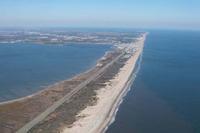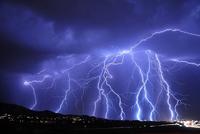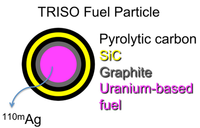-
A state of disrepair: Thousands of U.S. aging bridges risk collapse
Of the 607,380 bridges listed in the recent U.S. National Bridge Inventory, 65,605 bridges are classified as “structurally deficient” and 20,808 as “fracture critical,” with 7,795 of those bridges designated as both structurally deficient and fracture critical. Experts say this indicates significant disrepair and a risk of collapse. These 7,795 structurally deficient, fracture critical bridges carry more than twenty-nine million drivers a day.
-
-
Delaware prepares for sea-level rise

Benjamin Franklin said that that an ounce of prevention is worth a pound of cure, and Governor Jack Markell of Delaware agrees. Two weeks ago he unveiled an initiative aiming to prepare his state for the effects of climate change and sea-level rise. Markell has signed an executive order requiring all state agencies to take sea-level rise into account when designing and locating state projects. The order also requires development of strategies to make state facilities and operations better prepared to deal with climate change and sea-level rise.
-
-
Radioactive shale gas contaminants seep into a Pennsylvania creek

Researchers examined the quality of shale gas wastewater from hydraulic fracturing and the stream water above and below the disposal site in western Pennsylvania. Elevated levels of radioactivity, salts, and metals have been found in river water and sediments at a site where treated water from oil and gas operations is discharged into a creek.
-
-
Making clean drinking water universally available “achievable”
More than 780 million people around the world still do not have safe and reliable drinking water. The problem of providing clean water is most acute in developing countries, particularly in Africa, where creaking infrastructures struggle to keep pace with fast-growing urban populations; in rural areas, millions of water pumps stand unused waiting to be repaired.
-
-
Jellyfish attack shuts down Swedish nuke
The Oskarshamn nuclear plant in southeastern Sweden, one of the world’s largest nuclear power plants, was forced to shut down when it was attacked by a large cluster of jellyfish. On Sunday, operators of the plant had to scramble reactor number three after a cluster of jellyfish, weighing several tons, clogged the cooling pipes which carry water to keep the core of the reactor cool.
-
-
Harnessing lightning power to charge a mobile phone

Scientists from the University of Southampton have collaborated with Nokia on ground-breaking, proof-of-concept research into harnessing the power of lightning for personal use, an industry first that could potentially see consumers tap one of nature’s significant energy sources to charge their devices in a sustainable manner.
-
-
NYC enacts post-Sandy resiliency codes
Last week the New York City Council enacted laws implementing five recommendations of the Building Resiliency Task Force, led by Urban Green Council following Superstorm Sandy. This first package of laws makes NYC better prepared for future hurricanes and extreme weather.
-
-
Alabama State launches Nuclear Academy
A new academy at Alabama State University (ASU) will enhance security at nuclear, electric, and green-energy power installations across the United States and abroad. The new academy will provide comprehensive training for current and future security professionals who will offer infrastructure protection services to nuclear, electric and green-energy power installations.
-
-
NSF awards first coastal sustainability grants
More than half the world’s human population lived in coastal areas in the year 2000; that percentage is expected to rise to 75 percent by 2025. In wake of storms such as Hurricane Sandy, NSF grants will lead to better management of coastal environments.
-
-
Simulation show geothermal energy potential
Researchers in four countries are using an Idaho National Laboratory (INL) modeling program to simulate the subsurface physics important for geothermal energy extraction. The Fracturing and Liquid CONvection (FALCON) code enables simulation which is faster, simpler, and more comprehensive than previous options. It is helping researchers evaluate geothermal energy site data, and it may soon be able to offer predictions that could help improve geothermal energy output.
-
-
Robust fourth-generation nuclear fuel withstands high-temperature accident conditions

A safer and more efficient nuclear fuel is on the horizon. A team of researchers at the U.S. Department of Energy’s Idaho National Laboratory (INL) and Oak Ridge National Laboratory (ORNL) have reached a new milestone with tristructural-isotropic (TRISO) fuel, showing that this fourth-generation reactor fuel might be even more robust than previously thought.
-
-
U.S. nuclear power industry facing dire prospects
The U.S. nuclear industry is facing several daunting challenges, with industry experts concluding that it may well be an energy source of the past. New construction of nuclear plants has come to a halt, older nuclear plants are closing, and plant expansions are put on hold. The main culprits: the price of natural gas is dropping fast because of new resources becoming available as a result of fracking, and wind and solar are making steady, if slow, gains.
-
-
How Sandy has changed storm warning procedures
Superstorm Sandy slammed against the U.S. Eastern Seaboard in October 2012, inundating iconic communities. Those communities have been rebuilding since then and things are almost back to normal for most. Something else, however, has had to be rebuilt as well: the structured procedures for issuing warnings. The goal is to help communities better comprehend what natural disasters will bring their doorsteps.
-
-
Fracking in Ohio: tapping a valuable resource or invading the environment?
A new study is examining methane and other components in groundwater wells, in advance of drilling for shale gas which is expected over the next several years in an Ohio region. A team of researchers spent a year doing periodic testing of groundwater wells in Carroll County, Ohio, a section of Ohio that sits along the shale-rich Pennsylvania-West Virginia borders. The study analyzed twenty-five groundwater wells at varying distances from proposed fracking sites in the rural, Appalachian, Utica Shale region of Carroll County.
-
-
Fracking does not cause quakes, but disposing water used in the process might: scientists
Researchers say that human activity associated with oil and gas production may sometimes cause earthquakes, but the problem lies in the disposal of drilling fluids in the underground injection wells, not hydraulic fracturing. The vast majority of injection wells do not cause quakes.
-
More headlines
The long view
Helping Strengthen America’s Critical Infrastructure
Everyday life depends on a robust infrastructure network that provides access to running water, communications technology and electricity, among other basic necessities. The experts who keep our national infrastructure secure and resilient also need a strong network to share their knowledge and train the next generation of professionals capable of solving complex infrastructure challenges.
AI and the Future of the U.S. Electric Grid
Despite its age, the U.S. electric grid remains one of the great workhorses of modern life. Whether it can maintain that performance over the next few years may determine how well the U.S. competes in an AI-driven world.
Using Liquid Air for Grid-Scale Energy Storage
New research finds liquid air energy storage could be the lowest-cost option for ensuring a continuous power supply on a future grid dominated by carbon-free but intermittent sources of electricity.
Enhanced Geothermal Systems: A Promising Source of Round-the-Clock Energy
With its capacity to provide 24/7 power, many are warming up to the prospect of geothermal energy. Scientists are currently working to advance human-made reservoirs in Earth’s deep subsurface to stimulate the activity that exists within natural geothermal systems.
Experts Discuss Geothermal Potential
Geothermal energy harnesses the heat from within Earth—the term comes from the Greek words geo (earth) and therme (heat). It is an energy source that has the potential to power all our energy needs for billions of years.
